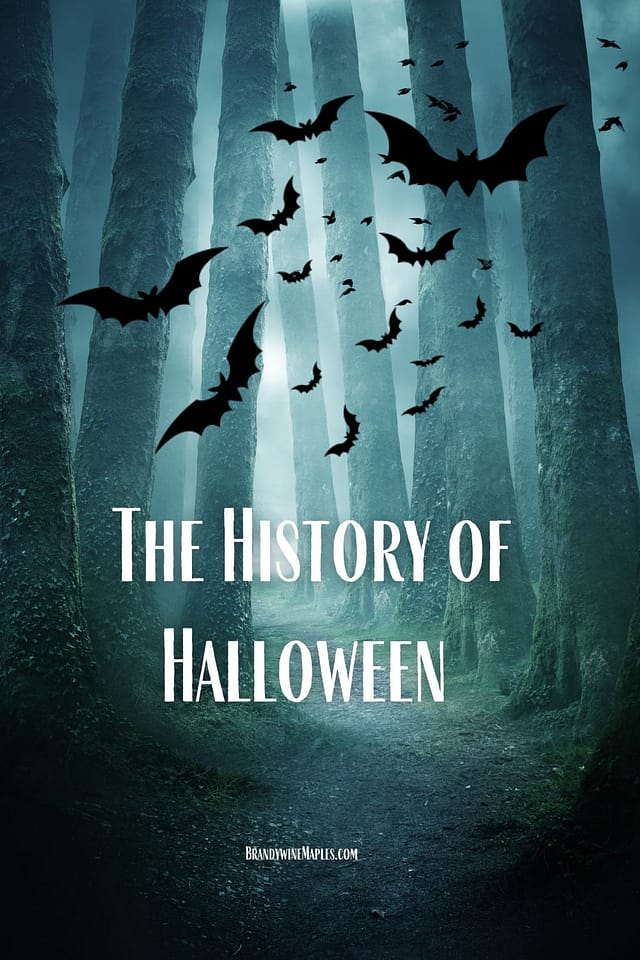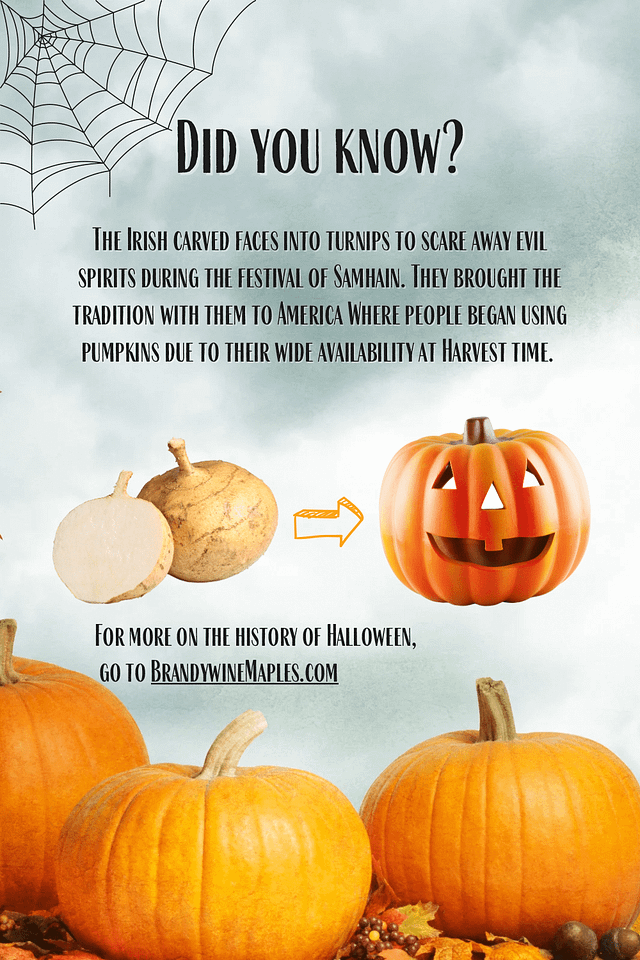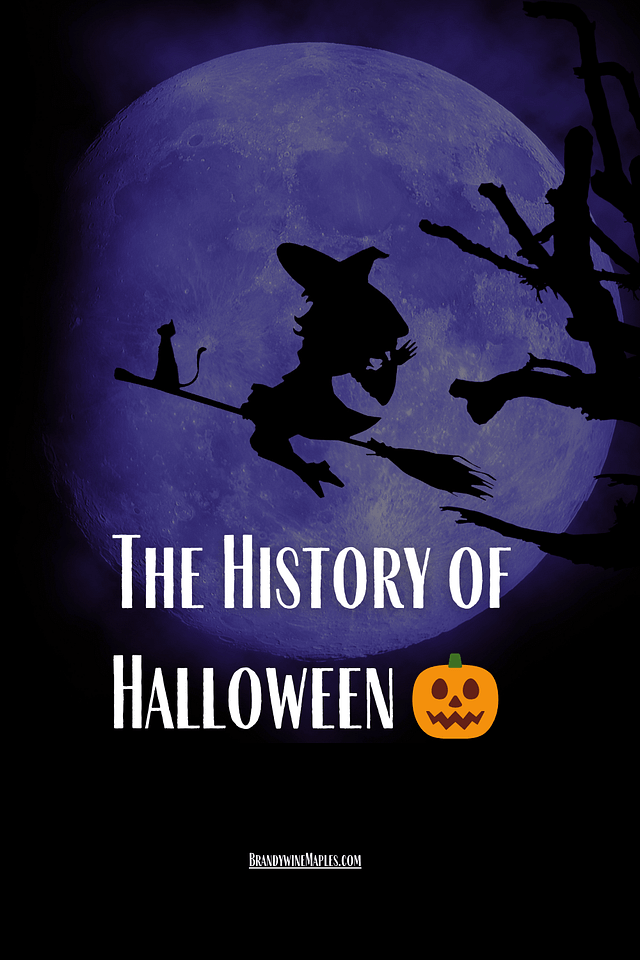The History of Halloween
Growing up in the 80’s/90’s raised in a church that distributed pamphlets on the evils of a holiday that embraced the Big Red Guy (Not Santa), I heard all sorts of things about the reasons Halloween was celebrated, how people celebrate, devil worship, etc… my family didn’t celebrate for many years and it resulted in a bit of an obsession on my part. I don’t really enjoy horror or gore, but I love this time of year! I was always curious about the truth behind the stories I had heard so I became informed and I love talking about the real history behind the holiday.
The TRUE History of Halloween
The history of Halloween is strongly tied to ancient cultures and mixing of ethnic and religious groups such as the Celtics, Christians and Romans, among others. Myths and legends surround Halloween due to ignorance and misinformation. The combination of several cultures coming to the United States and traditions and religions combining have led to the holiday that we are familiar with today.

Ancient Traditions
The ancient Celtic people celebrated Samhain (pronounced Sow-in) and is still celebrated today by many. November first marks the end of summer and some say, the new year. The night before, people would gather together around a bon fire and dressed in animal hides and heads. The costumes were worn to disguise them from spirits and demons that were believed to roam freely on October 31st. They believed that on this night the veil between the living and dead was thinnest making it easier for spirits to wander our plane of existence. Due to the thinning veil, the Druids (Celtic Priests) thought that they were able to better predict the future on this night. This was important because the people’s comfort and confidence relied heavily on superstition and predictions to get through the winter. They buried crops and made animal sacrifices to appease the deities and to ask for protection during the winter months. At the end of the evening the people would carry a torch back to their homes from the bonfire to light their fires at home with as an added safeguard against ghouls and winter, as their superstitions dictated.
By 43 AD, the Romans had conquered Celtic territory and brought with them their own holidays and traditions. The Romans commemorated the passing of the dead in a celebration called Feralia. This was celebrated on a day in late October. They also paid tribute to the goddess of fruit trees, Pomona, around this time of year. The symbol of Pamona was the apple and so the fruit played a roll in much of the festivities. We see this now as a symbol of the seasonal harvest and in our seasonal games like bobbing for apples.
Christianity spread through the area in the 800’s bringing christian views to the Celts and Romans. In the seventh centure, Pope Boniface IV named November 1st All Saints Day honoring saints and martyrs. October 31st became All Hallows Eve and in 1000 AD, November 2nd was named All Souls Day to honor the dead. The three holidays together beame known as Hallowmas. It is thought that Christians designated these holidays on these dates to take over the already existing holidays making it easier for the Celts and Romans to convert.
Halloween Comes to America
With the new colonies and Protestants in America came a more rigid culture. The holidays that may have been celebrated in Europe were not celebrated except for in some of the Southern Colonies. European beliefs mixed with other migrating ethnic groups and American Indians brought forth a new brand of Halloween-like celebrations. Autumn festivals were prevalent and the whole community came together to celebrate the harvest, tell ghost stories, sing, dance and play mischievous tricks. This was the precursor to the holiday that we celebrate.
The Irish potato famine on 1846 brought many immigrants that followed Irish and English traditions. One of these traditions was dressing in costumes and going door to door begging for money and food. Another was divination. Young women believed that doing tricks with yarn, looking over their shoulders in a mirror in the dark and tossing apple peelings over their shoulders on certain nights would show them the name or face of the man that they would marry. Other games were played by young women for luck so that by the next year they would be married. The Irish also contributed their tradition of turnip carving (Jack-o-lanterns).

In the 1800’s secular parties became popular mainly for adults but sometimes for children as well. People were encouraged to remove anything scary or religious from their festivities. In the 1920’s and 30’s communities began throwing town-wide parties and festivals. Vandalism was prevalent in the tradition of making mischief but was often taken to extremes. Measures were taken by many communities to prevent vandalism and parades and parties became a way to occupy young people so that they weren’t tempted. By the 1950’s the holiday closely resembles what we know today. Thanks to the Boomer generation, the festivities were held in homes and school rooms to accommodate children. “Trick or Treating” became a way for the community to stay involved. Vandalism was not tolerated and it was nearly non-existent as it had become primarily a children’s holiday.
Halloween Today
The Halloween that we know and celebrate today is a conglomeration of the traditions of the past. It is a representation of various cultures and religions coming together and sharing what they know an love. The idea that Halloween is a Satanic holiday or that it is a time for human sacrifices and kidnappings is the stuff of myths and legends. Much of what we see as related Halloween criminal activity is the work of people who are using the holiday and the fear surrounding it as an excuse to do what they already wanted. America’s brand of Halloween is often misunderstood and may seem different that other countries but it shares commonality with many traditions from around the world.

Halloween is one of my favorite times of year, though, I enjoy a lighter hearted “cutesy” holiday going trick-or-treating with my kids and celebrating harvest time. Pumpkins, orchards, hayrides, hot cider, costumes, candy-all the good things.
Is the history of Halloween surprising to you? Didn’t miss anything?
Do you calibrate Halloween? Share your traditions with us!